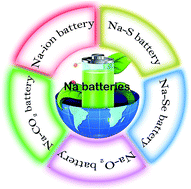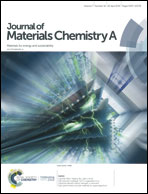Sodium-based batteries: from critical materials to battery systems
Abstract
Sodium-based energy storage systems are attracting tremendous attention along with the growing demand for electric vehicles and grid-scale energy storage. Sharing similar intercalation chemistry to their lithium counterpart, sodium-ion based systems show promising potential for large-scale application due to the benefit of the low cost and natural abundance of sodium sources. However, despite the rapid progress, sodium-based energy storage systems still face enormous challenges such as slow kinetics and unstable cyclability, which continue to attract intense research efforts. In this review, we briefly summarize the recent progress in the material design for sodium-ion batteries, including both inorganic and organic materials. Then, we systematically summarize the current strategies for building post-sodium batteries, typically Na–O2, Na–S, Na–Se, and Na–CO2, with a focus on the key components of different devices, including the electrode materials, electrolytes, and cell structure. Particularly, we discuss in detail the reaction path between Na and S (Se) to facilitate the understanding of the electrochemical mechanism of sodium-ion based systems. Furthermore, to highlight the recent progress, we discuss the design and optimization of Na–O2 (CO2) batteries through an evaluation of the electrolytes and cathode configuration with suitable gas channels, which are critical factors to determine the reaction mechanism. Finally, the current challenges and future perspectives of sodium-based energy systems are also presented.

- This article is part of the themed collection: Recent Review Articles


 Please wait while we load your content...
Please wait while we load your content...